For more information about the Thompson Historical Advisory Committee, click here.
Historical Marker Project:
In March 2005, the Thompson Township Board formed the Thompson Historical Advisory Committee to collect data to educate, preserve and enhance our history. Members of the committee are Laurie Jasmin, Wayne Stanley, Meg Wnuk, Charlene Crosby, Pam Zorn, Deanna Fish and Robyn McLeod.
Our first goal was to erect a historical marker on the shores of Lake Michigan to commemorate the Village of Thompson and the legend of the Christmas Tree Ship (see our history pages for more information).
The marker site is owned by the Department of Natural Resources under the supervision of the Parks & Recreation Division. With the help of our local parks manager, Mr. Lee Vaughn, we were able to obtain permission to install our marker on their land. Our next step was to apply for the marker with the Michigan State Historic Preservation Office (SHPO). In August 2005, our full application was mailed to Lansing with research materials, photos, maps, and more.
On January 3, 2006, we received an email from Ms. Laura Ashlee (SHPO), stating that the Christmas Tree Ship and the history of Thompson was an excellent candidate for the marker. The cost for the marker was $3,150.00. Our first fundraiser was a spaghetti dinner with bake sale and craft raffle in which we raised over $800. We received donations from the Sault Tribe of Chippewa Indians, the Schoolcraft Community Foundation, and the committee sold historical calendars and DVDs to help pay for the marker. The balance of what was owed was paid for through the township.
Several workbees were held at the site to prepare for the marker. Volunteers cleared, hauled brush, spread gravel, mowed, and trimmed grass. At the end of August 2006 we received the marker at the township hall and immediately started planning a dedication ceremony for October 21st, 2006. Private invitations were mailed to approximately 100 people and press releases were sent out all over Michigan, Wisconsin, and Chicago. The committee went above and beyond in their efforts to make this event one of class that people would not soon forget.
Out-of-Town Guests at the marker dedication included:
- Dr. & Mrs. William Ehling (grandson of Captain Schuenemann) from Streator, Illinois;
- Barbara Ehling (great-granddaughter of Captain Schuenemann), Streator Illinois;
- Glenn Longacre, National Archives Great Lakes Region, Chicago, Illinois;
- Rochelle Pennington, author of The Historic Christmas Tree Ship, West Bend, WI;
- Jim Brotz, diver (Mr. Brotz has been on the Simmons over 60 times and restored the wheel that is on display at the Rogers Street Fishing Museum in Two Rivers, WI);
- Peter Scotland, diver;
- Dr. Thomas Nolan, Tucson, Arizona, (Dr. Nolan generously provided the committee with copies of the original documentary on the wreck and recovery of the Rouse Simmons);
- Stuart Haskell and his wife Mickey, (Mr. Haskell played the bagpipes at the ceremony on the lakeshore in full uniform and again at the township hall);
- Carl Behrend, author of the Legend of the Christmas Ship and folk singer, Munising, MI;
- Thomas Truscott, Michigan Historical Commission Member, (Mr. Truscott dedicated our marker)
The day started at 2pm at the marker site and then moved to the township hall. The hall and fire hall were decorated in an old fashion Christmas theme and refreshments were served. At 4pm a program started with Carl Behrend entertaining with his song on the Christmas ship and was followed by a program and book signing by Rochelle Pennington.
Approximately 200 people attended and the event was a success on every level!
Thompson History:
(Right click and download or left click and view PDF in a new window)
In The Beginning……..There were virgin forest and plenty of timber to attract the lumber trade. By 1881, the Delta Lumbing Company was operating a mill along the shores of Lake Michigan and the village was thriving. Owner and President of the mill was E.L. Thompson.
The township was officially established March 6, 1882 and was formed by the division of Hiawatha Township. Several changes were made in the years that followed with parts of Inwood Township being attached and detached. The last change to the township boundaries were made in 1919.
The village of Thompson was platted shortly thereafter on November 8th, 1888 and was named in honor of E.L. Thompson, President of the Delta Lumber Company.
The first official census was taken in 1884 and recorded in the township books. The census enumerator was William T. Kinner. The township at large was recorded with 330 people and the Village was 207, for a total count of 537. Our first supervisor was Mr. Jospeh Walsh.
By the early 1900’s, the township had 8 schools, a general store, township hall, 3 churches (Catholic, Swedish Lutheran & Methodist), a barber shop, boarding house, livery stable, a hotel, saloons and a hospital. There were 3 doctors, and a midwife. The Thompson Railroad was instrumental in hauling the logs to and from the mill but was also used for passenger tours to the Big Springs.
Some of the village streets were lined with boardwalks and lit with oil torches for street lights. The first phone was located in the lumber company office. It wasn’t until the 1930’s that electricity was extended into the village from the Cook’s station.
The early mail delivery was, of course, by horseback and came from Garden. In later years, the mail came from neighboring Manistique. The first postmaster was Alvah Mathews.
A daily stage was driven to Manistique, taking passengers for $0.50 by Ed McRitchie.
Other settlements in the township, outside of the village, were located at Parent Bay, Barque Point, South
Town, Swede Town and Dog Town.
Below is a picture taken from a tree platform of the village in the late 1890’s.
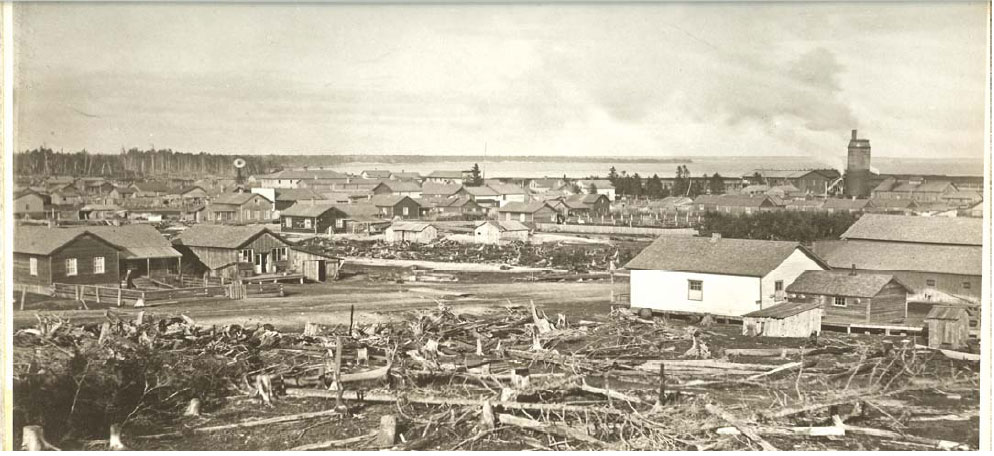
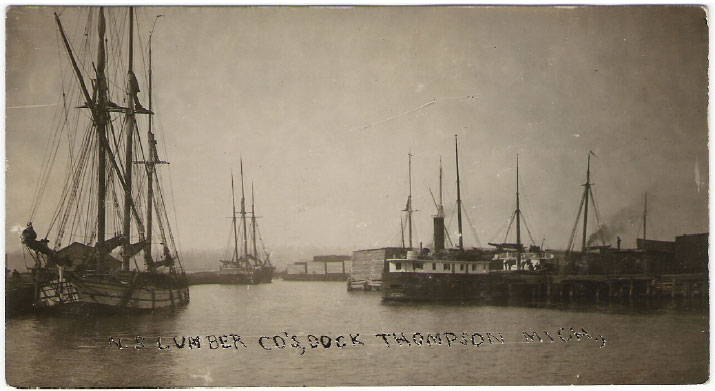
November 22, 1912—The Rouse Simmons , Captain Schuenemann & Crew Leave Thompson Docks for the Last Time.
The Rouse Simmons was a three masted wooden schooner that was better known as The Christmas Tree Ship. Her Captain, Herman Schuenemann, was looked upon very fondly in Thompson and the surrounding area. The schooner sailed the lake with loads of lumber until the last few trips of the season. Those were special trips when “Cap”, as he was known to many, would load the ship with a variety of trees that had been harvested throughout the county.
These trees were taken to the docks of Chicago and sold. The people of Chicago looked forward to this annual tradition and those who could not afford the price were given one for free.
As the ship was being loaded that last time, sailors were upset and superstitious when they claimed to see rats leaving the ship. However, nothing was going to keep the Captain from returning to Chicago. A snowstorm came up soon after the ship set sail and still Cap refused to wait. The ship was last seen in distress off the coast of Kewaunee, Wisconsin on November 23rd. A lifesaving crew from Two Rivers U.S. Life Savings Station tried to reach her but were turned back by the violent lake. All hands on deck were lost.
In 1971 the wreckage was found off Two Rivers Point by Diver Kent Bellrichard. The schooner was nearly intact and there were still many trees aboard.
A well documented and researched book (The Historic Christmas Tree Ship, a Story of Faith, Hope & Love) has been written on the Rouse Simmons and the Schuenemann family by author Rochelle Pennington.
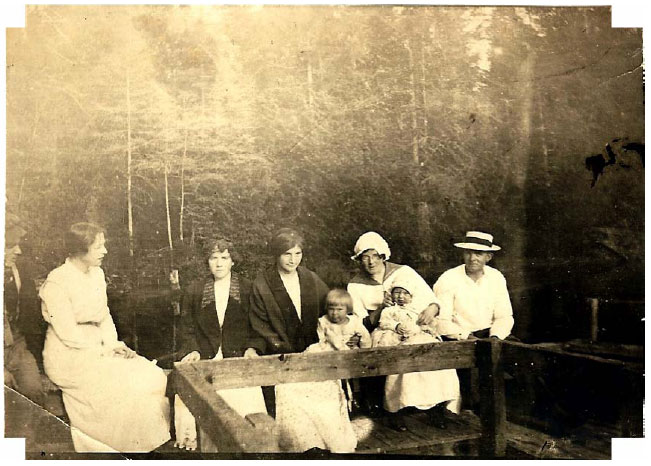
Legendary Kitch-iti-Kipi (Big Spring)
This spring is the largest in Michigan, with over 16,000 gallons of water a minute boiling from underneath. The spring is two hundred feet across and 40 feet deep with a constant temperature of 45 degrees. The Indian called the waters Kitch-iti-kipi, and it has also been known as Mirror of Heaven. It is a part of the 417 acre Palms Book State Park and much of the credit for developing the spring into a tourist attraction goes to John Bellaire, who directed early visitors to the spring by painting white lines around the utility poles. Early transportation across the raft was by a simple log raft which has long since been replaced.
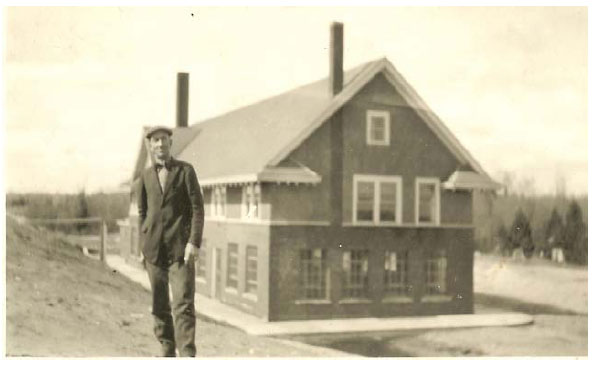
Mr. John Engle, Manager in front of Unit #1 of Thompson Fish Hatchery.
In 1919, Thompson saw the completion of the Thompson State Fish Hatchery. In 1924, the hatchery was provided with a truck capable of hauling 40 milk cans for transporting fish. Under orders from Lansing, the hatchery would produce one million fish annually for planting in the local area as well as other locations throughout the state. In 1929 the second unit of the hatchery was built. It was located about a mile north of the first unit. Here a crystal clear spring produced 1,347 gallons per minute for 45 degree water. This was considered one of the best water supplies in the state for incubating trout eggs.
Albert Smith Jr., Marine Guard Receives the Congressional Medal of Honor
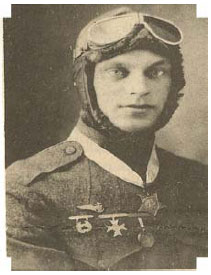
Albert Smith, Jr.
While stationed at the Pensacola Air Station on Feb 11, 1921, a Navy seaplane, which was being warmed up on the bay by mechanics suddenly took flight. The plane fluttered briefly overhead and then plunged to the ground exploding 25 feet from his post. Even though the gasoline covered wreckage was burning fiercely, Smith plunged into the flames and pulled out one of the crewmen who later died and rescued the second who was lying in the path of the flames. Smith was hospitalized for several weeks with severe burns.
Although Smith felt that he did nothing more than what anyone else would do under the circumstances, the Navy awarded Smith the highest award in the military.
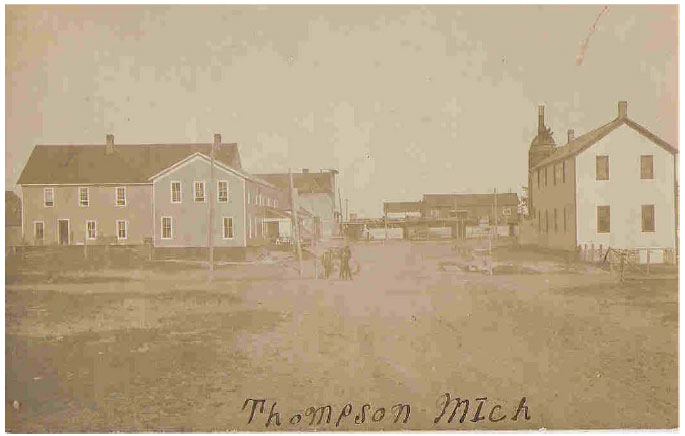
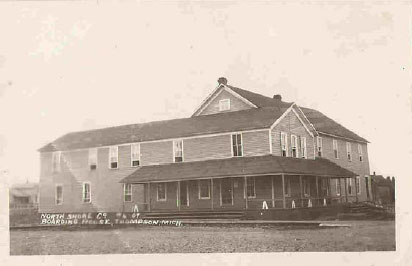
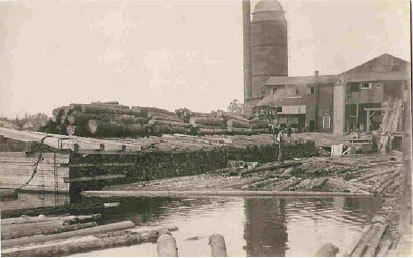
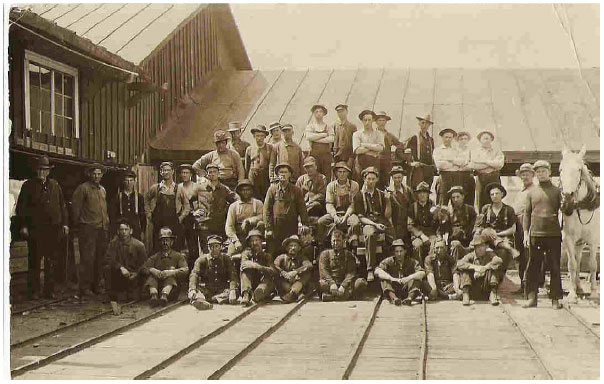
Crew of Men Working at Mill
